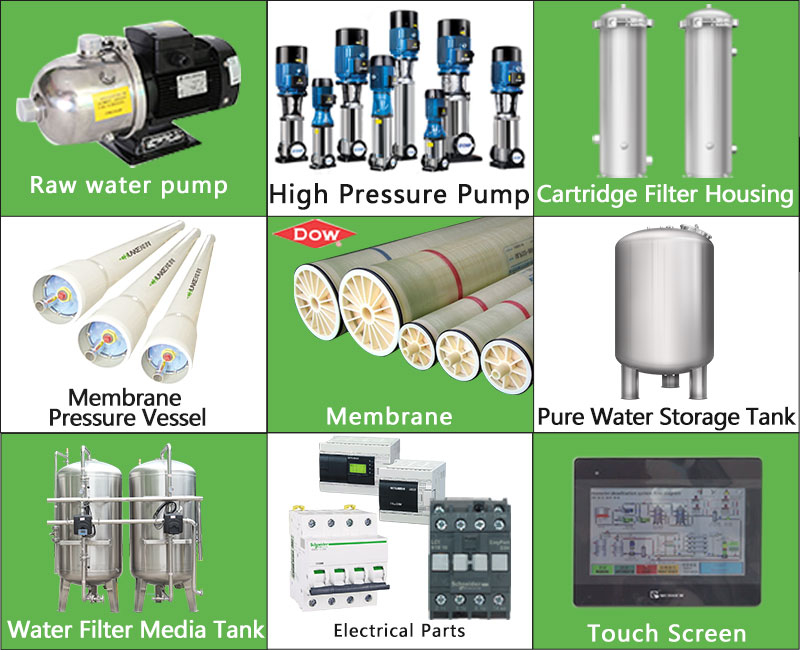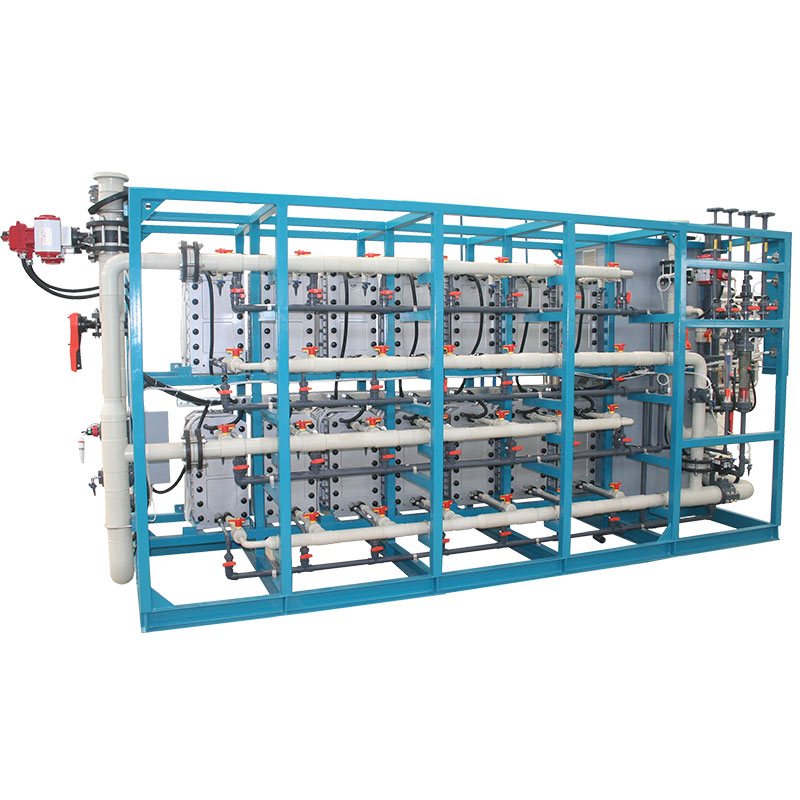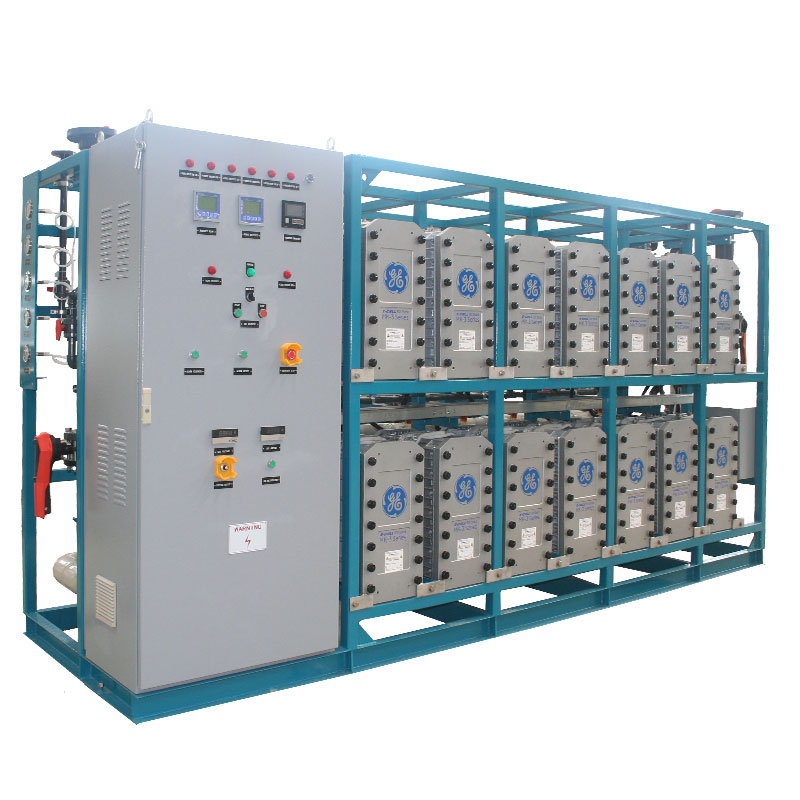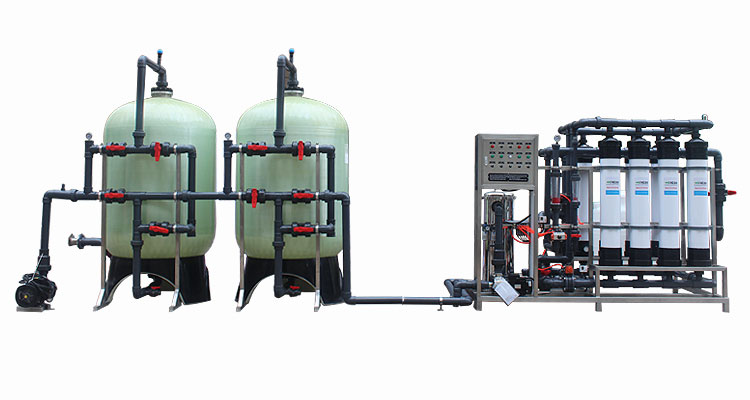What is the most effective water treatment method?
Against the backdrop of global water shortage and increasing pollution, finding efficient water treatment methods has become a key topic for governments, enterprises and research institutions. Various water treatment technologies have emerged one after another, each with its own characteristics, but which method is the most effective?
This article will explore several major water treatment methods in depth, including their principles, advantages, scope of application and effectiveness, in order to find the most effective water treatment solution.

What are the water treatment methods?
Water treatment methods can be divided into three types: traditional water treatment methods (precipitation, filtration, disinfection), advanced water treatment methods (reverse osmosis, ultrafiltration, electrodialysis), and comprehensive water treatment methods (activated carbon + ultrafiltration, reverse osmosis + ozone oxidation, electrodialysis + reverse osmosis).
Traditional water treatment methods
1. Sedimentation method:
● Principle: Through natural or artificial means, the suspended particles in the water are settled to purify the water quality.
● Advantages: simple equipment, low cost and easy operation.
● Scope of application: mainly used in the primary treatment stage of drinking water treatment and industrial wastewater treatment.
● Effectiveness: It is effective in removing suspended particles in water, but it is less effective in removing dissolved pollutants and microorganisms.
2. Filtration method:
● Principle: Use filter media (such as sand, gravel, activated carbon, etc.) to intercept suspended matter, colloids and microorganisms in water.
● Advantages: Simple operation, convenient maintenance, and good filtration effect.
● Application range: Widely used in drinking water, industrial water and sewage treatment.
● Effectiveness: It is effective in removing suspended matter, colloids and some microorganisms, but it is limited in removing dissolved pollutants and viruses.
3. Disinfection method:
● Principle: Kill pathogenic microorganisms in water through chemical agents (such as chlorine, ozone) or physical methods (such as ultraviolet rays).
● Advantages: It can effectively kill a variety of pathogenic microorganisms and is easy to operate.
● Application range: Widely used in drinking water, swimming pool water and sewage treatment.
● Effectiveness: It is effective in killing bacteria and viruses, but it is ineffective against dissolved organic and inorganic matter.
Advanced water treatment methods
● Principle: Use high pressure to pass water molecules through a semipermeable membrane, intercept soluble salts, organic matter and microorganisms, and obtain pure water.
● Advantages: It can effectively remove most soluble pollutants and microorganisms in water, and the water quality of the produced water is high.
● Application range: Widely used in drinking water preparation, industrial pure water and seawater desalination.
● Effectiveness: It has a significant effect on removing soluble pollutants, but the initial investment of the system is high, the operation and maintenance costs are high, and the requirements for the quality of the incoming water are strict.
2. Ultrafiltration (UF):
● Principle: Use the microporous structure of the ultrafiltration membrane to intercept particulate matter, colloids and microorganisms in the water.
● Advantages: It can efficiently remove suspended matter, colloids and microorganisms in water, and the equipment is compact and occupies a small area.
● Application range: Widely used in drinking water, industrial water and sewage recycling.
● Effectiveness: It has a significant effect on removing suspended matter, colloids and microorganisms, but has limited effect on removing soluble pollutants.
3. Electrodialysis (ED):
● Principle: Using the electric field, the anions and cations in the water are separated through the selective ion exchange membrane to obtain purified water.
● Advantages: It can effectively remove ionic dissolved substances in the water, and the equipment is simple to operate.
● Application range: Mainly used for industrial wastewater treatment and seawater desalination.
● Effectiveness: It has a significant effect on removing ionic dissolved substances, but is ineffective for non-ionic pollutants and microorganisms, and has high energy consumption.
4. Ozone oxidation:
● Principle: Using the strong oxidizing property of ozone to decompose organic matter and microorganisms in water.
● Advantages: It can efficiently kill bacteria and viruses, decompose organic pollutants, and the products have no secondary pollution.
● Application range: It is widely used in drinking water, sewage and industrial wastewater treatment.
● Effectiveness: It has a significant effect on removing organic matter and killing microorganisms, but has a limited effect on removing inorganic matter, and the system operation cost is high.

Comprehensive water treatment method
The comprehensive water treatment method combines multiple single treatment technologies, takes the advantages of each technology, and gives full play to the advantages of each technology to achieve a more efficient water treatment effect. The following are several common comprehensive water treatment methods:
1. Activated carbon + ultrafiltration:
● Principle: First use activated carbon to adsorb organic matter and some microorganisms in the water, and then use ultrafiltration membrane to intercept suspended matter, colloids and remaining microorganisms.
● Advantages: It can efficiently remove organic matter, suspended matter and microorganisms, and has good water purification effect.
● Scope of application: Widely used in drinking water and industrial water treatment.
● Effectiveness: It combines the advantages of activated carbon adsorption and ultrafiltration, and has significant effects on the removal of organic matter and microorganisms, but has limited effects on the removal of soluble inorganic matter.
2. Reverse osmosis + ozone oxidation:
● Principle: First use reverse osmosis membrane to remove soluble salts and most organic matter in the water, and then use ozone oxidation to decompose the remaining organic matter and kill microorganisms.
● Advantages: It can provide high-quality pure water and effectively remove various pollutants in the water.
● Scope of application: Widely used in drinking water, industrial pure water and sewage treatment.
● Effectiveness: It combines the advantages of reverse osmosis and ozone oxidation, has significant effects on the removal of dissolved pollutants and microorganisms, and has high water quality, but the initial investment and operating costs of the system are high.
3. Electrodialysis + reverse osmosis:
● Principle: First, remove ionic dissolved substances in water through electrodialysis, and then use reverse osmosis membrane to further remove residual dissolved pollutants and microorganisms.
● Advantages: It can efficiently remove ionic and non-ionic pollutants in water, and has good water purification effect.
● Scope of application: It is widely used in industrial wastewater treatment and seawater desalination.
● Effectiveness: It combines the advantages of electrodialysis and reverse osmosis, and has significant effects on the removal of dissolved pollutants, but the system has high energy consumption and high operating and maintenance costs.

What is the most effective water treatment method?
To evaluate the most effective water treatment method, multiple factors need to be considered, including treatment effect, scope of application, economy and environmental impact. The following are several key evaluation criteria:
Treatment effect:
The treatment effect is an important criterion for evaluating water treatment methods, which mainly examines its ability to remove various pollutants in water (such as suspended matter, dissolved pollutants and microorganisms). An efficient water treatment method should be able to completely remove various pollutants in the water and provide high-quality clean water.
Scope of application:
The scope of application refers to the applicability of water treatment methods in different application scenarios (such as drinking water, industrial water and sewage treatment). Widely applicable water treatment methods can provide stable treatment effects in a variety of scenarios and have high versatility.
Economic efficiency:
Economic efficiency includes initial investment in equipment, operating costs and maintenance costs. A water treatment method with good economic efficiency should have low initial investment and operating costs, and be easy to maintain, which can save costs in long-term operation.
Environmental impact:
Environmental impact examines the impact of water treatment methods on the environment during operation, such as energy consumption, wastewater discharge and chemical use. Environmentally friendly water treatment methods should have low energy consumption and wastewater discharge, use harmless or low-toxic chemicals, and reduce negative impacts on the environment.

Comprehensive evaluation of the most effective water treatment method and conclusion
According to the above evaluation criteria, reverse osmosis (RO) technology is considered to be one of the most effective water treatment methods. Reverse osmosis technology uses semipermeable membranes to efficiently remove dissolved salts, organic matter and microorganisms in water, and can provide high-quality purified water. It is suitable for a variety of application scenarios such as drinking water preparation, industrial pure water and seawater desalination.
However, the initial investment and operating costs of reverse osmosis technology are high, and the requirements for influent water quality are strict. It is suitable for use when economic conditions permit and water quality requirements are high. In practical applications, reverse osmosis technology is often used in combination with other water treatment methods (such as pretreatment, ozone oxidation, etc.) to further improve the treatment effect and reduce operating costs.




